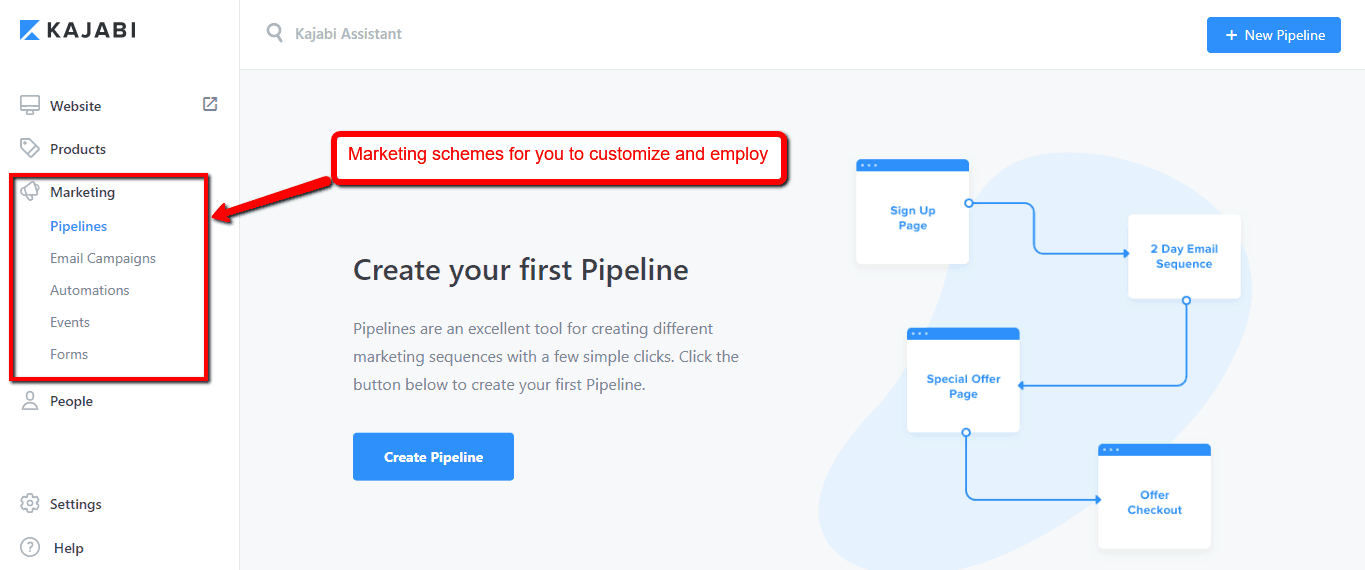
When it comes to selling in digital goods and information products, there’s a lot of misinformation out there. Too many bloggers talk about selling physical goods as being nothing but trouble, while they talk about selling virtual goods as being a walk in the park. If only things were so black and white in reality. There are advantages and disadvantages associated with both models.
I’ll concede that to some extent, it is true. With digital products, you have no need to worry about stock levels, there are no shipping restrictions, no need for warehouse space, and there is a high profit margin. That doesn’t mean that there aren’t any pitfalls, however.
It is still important to make the right choices when getting your product out there. Here are some things to keep in mind.
1. Sometimes It’s Best to Use Established Marketplaces
When it comes to selling audio files, such as songs or audiobooks, you are most probably already aware of at least one marketplace where these products are often sold. Services such as Spotify and Google Play Music are used by the vast majority of music lovers if they want to stream or purchase songs and albums, while Audible is the world’s leading platform for audiobooks.
The great thing about these types of services is that they take the “heavy lifting” out of your hands and sort out all of the back-end issues themselves. By the time you upload your product to their servers, your work is basically done – at least from a business setup perspective. And unless you invest heavily in marketing or enlist the help of a PPC agency, the chances of someone discovering and buying your content on platforms like these are greater than the chances of them finding your way to your own website.
The downside to this is that marketplaces take a sizable chunk of the revenues for their troubles. For most budding digital product merchants out there, this tradeoff is acceptable, as it gives you the ability to make simple, hassle-free sales.
2. Add Value to Your Products to Stem Piracy
If selling online courses is more your thing, then there are a few issues to consider before putting your work on the market. Simply distributing coursework from a hosted server is all well and good, but it does, unfortunately, leave you open to having your work copied and distributed without your knowledge. While this cannot be completely eliminated when it comes to selling any kind of text-based digital product, there are a few things that you can do to stem the flow of illegal distribution and encourage customers to buy directly from you.
The biggest of these is to use a platform created specifically for online courses. The beauty of these platforms – I recommend that you start by comparing Kajabi to Teachable – is that they provide much more than just a document distribution service. Kajabi even offers some seriously sophisticated marketing automation features, built in an extremely accessible manner so that even non-techies and non-marketers find it to be a breeze.

But overall, platforms like these can help you build your website, create brands and themes, include quizzes or exams, create collections of video and audio help resources, and cultivate a community around your online course business. Bringing more to the table than simply an e-book should encourage your clients to patronize your service, as the rewards are huge in comparison to simply downloading your documents from a torrent site. Add value to your service, and expect to drive more traffic towards your product.
3. Make Sure to Experiment With Free Trials
One of the greatest things about distributing a product digitally is that sometimes you can give a prospective client a little taste of what your product is all about.
If it’s a book you are trying to sell, releasing chapter one for free can draw intrigue, while stock photographers can release photos or videos with watermarks added to the files, allowing the end user to see if the product suits their needs, and then pay for the pure, untainted files once they are suitably impressed.
If your particular product wouldn’t suffer from giving customers a free sample, it is highly recommended to do so. Many phone and PC apps already do this, with ”lite” versions of their products, while audiobooks often have a sample page or two available for listening before purchase. From online courses to complete databases, give the customer a taste, and see if they return for the real thing.
4. Let Someone Else Do the Hard Work When Transmitting Large Files
When it comes to selling a digital product that is large in size (think video files, video games, PC applications, or even, to some extent, lossless audio files) it is probably best to host your product on a third-party cloud storage service that supports effective access governance settings.
These companies have purpose-built server systems that are made to shoulder the burden of distribution. If you have a video you wish to sell on your own hosted servers, you will soon find your system creaking under the strain of the large file sizes. The worst thing about this approach is that the more popular your product gets, the heavier the strain, and the more expertise you will need to keep your services up and running. Instead, leave the heavy lifting to the experts and concentrate on your product.

Nobody wants to spend a fortune on their own hosted servers, and equally, nobody wants to keep an eye on the traffic and stress levels they are under. Whether it’s stock video footage you are hosting on a platform such as Pond5, or a videogame that you are hosting on Steam, you won’t regret letting someone else sort out the back end for you.
5. Get Those Repeat Customers
Often thought of as the lifeblood for most businesses, customer loyalty is what you need. Convincing someone who has never heard of you to make a purchase is much harder than convincing someone who has already enjoyed something they’ve bought. And selling digital products actually makes loyalty simpler when compared to selling physical goods.
If, for example, you run an online fitness website, there is nothing stopping you from offering existing customers a discount on their second course. Or perhaps you can sell the basic courses at a set price, but for a little extra, offer access to an additional library of tutorial videos.
Either way, selling in the digital marketplace leaves plenty of scope for treating your return customers in the right way. Keep the regular customers happy, and they have a tendency to tell others about their experience.
Keep It Manageable
Setting up a business that deals with digital products is not hassle-free, but it is certainly less troublesome than dealing with physical products. With a little planning, you can make sure your product gets into as many hands as possible, while simultaneously causing you as fewer headaches as possible.
With no stock levels to worry about, very simple distribution, and the ability to sell to anyone, anywhere on the planet; you should be patting yourself on the back for getting into this particular game. Get the basics sorted, and your journey through the digital marketplace should be a relatively smooth one.
